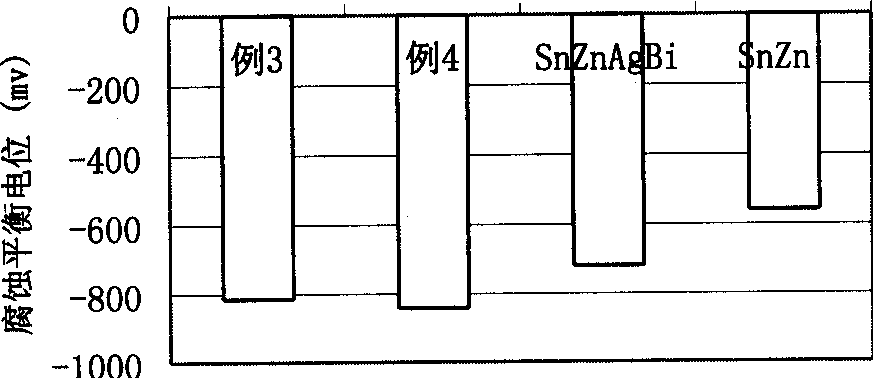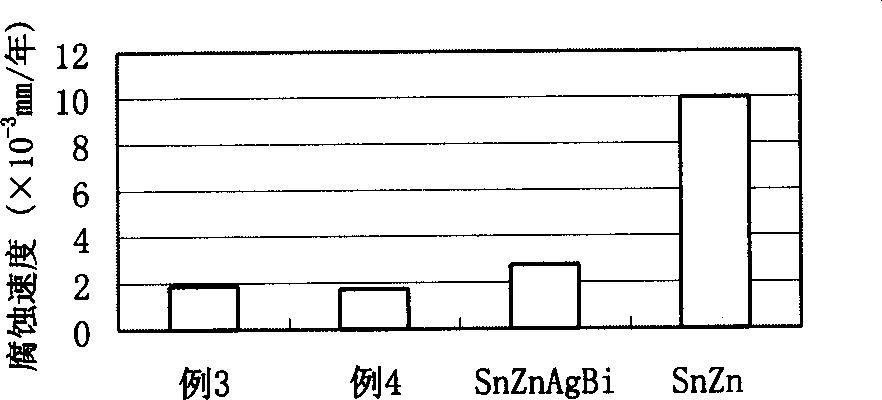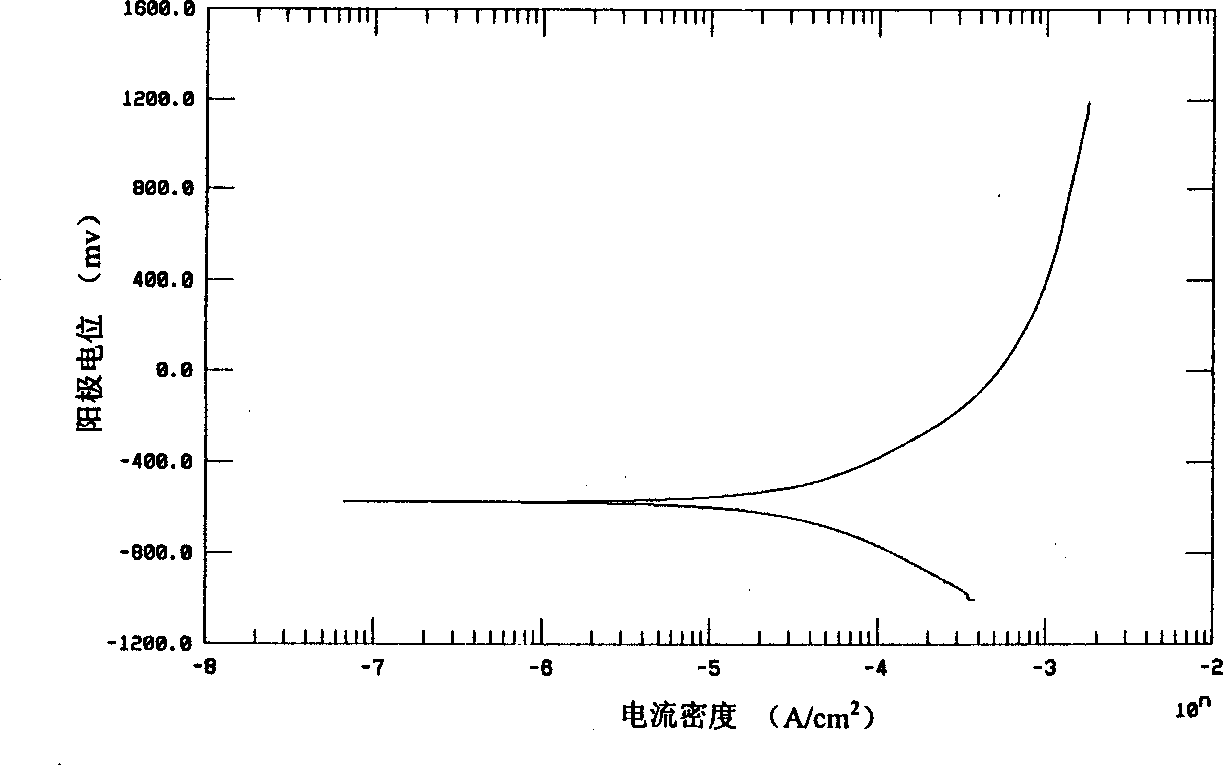Rare earth-containing tin-base lead-less brazing alloy and its prepn
A lead-free solder, tin-based technology, applied in manufacturing tools, welding equipment, metal processing equipment, etc., can solve the problems of complicated preparation process, weakening bonding strength, and rising solder cost.
- Summary
- Abstract
- Description
- Claims
- Application Information
AI Technical Summary
Problems solved by technology
Method used
Image
Examples
example 1
[0016] Example 1: Weigh 130 grams of potassium chloride and 100 grams of lithium chloride into an alumina crucible, mix well, heat and melt to 600 ° C, pour molten salt on 95.5% pure tin to completely melt the tin, at 450 At ℃, add 4% Zn into the molten tin liquid, and at the same time stir continuously to melt Zn; quickly press 0.5% rare earth into the molten mixed salt and Sn-Zn alloy, stir and melt; keep warm for 30 minutes, Let it stand for 10 minutes and then take it out of the furnace to cool, and remove the mixed salt of potassium chloride and lithium chloride on the surface after solidification. Reheat and melt the brazing filler metal to 350°C, pour the molten brazing solution on the slightly inclined angle steel, and let it cool rapidly into strips for use.
example 2
[0017] Example 2: Weigh 130 grams of potassium chloride and 100 grams of lithium chloride into an alumina crucible, mix well, heat and melt to 600°C, pour molten salt on 93.8% pure tin to completely melt the tin, at 450 At ℃, add 6% Zn into the molten tin liquid while stirring continuously to melt Zn; quickly press 0.2% rare earth into the molten mixed salt and Sn-Zn alloy, stir and melt; keep warm for 30 minutes, Let it stand for 10 minutes and then take it out of the furnace to cool, and remove the mixed salt of potassium chloride and lithium chloride on the surface after solidification. Reheat and melt the brazing filler metal to 350°C, pour the molten brazing solution on the slightly inclined angle steel, and let it cool rapidly into strips for use.
example 3
[0018] Example 3: Weigh 130 grams of potassium chloride and 100 grams of lithium chloride into an alumina crucible, mix well, heat and melt to 600 ° C, pour molten salt on 91.95% pure tin to completely melt the tin, at 450 At ℃, add 8% Zn into the molten tin liquid, while stirring continuously to melt Zn; quickly press 0.05% rare earth into the molten mixed salt and Sn-Zn alloy, stir and melt; keep warm for 30 minutes, Let it stand for 10 minutes and then take it out of the furnace to cool, and remove the mixed salt of potassium chloride and lithium chloride on the surface after solidification. Reheat and melt the brazing filler metal to 350°C, pour the molten brazing solution on the slightly inclined angle steel, and let it cool rapidly into strips for use.
PUM
 Login to view more
Login to view more Abstract
Description
Claims
Application Information
 Login to view more
Login to view more - R&D Engineer
- R&D Manager
- IP Professional
- Industry Leading Data Capabilities
- Powerful AI technology
- Patent DNA Extraction
Browse by: Latest US Patents, China's latest patents, Technical Efficacy Thesaurus, Application Domain, Technology Topic.
© 2024 PatSnap. All rights reserved.Legal|Privacy policy|Modern Slavery Act Transparency Statement|Sitemap



